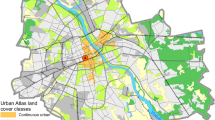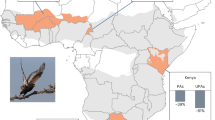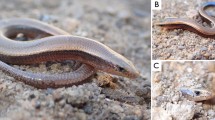Abstract
PROBABLY none of your readers have thought it worth while to make any comment on the letters on this subject which have recently appeared, because it would seem needless to discuss the origin of “fascination” by means of the eye of a snake (or whatever may be the stimulus to the alleged condition) while all the evidence we can obtain from these reptiles in confinement proves that the condition does not exist. It devolves upon those who might object to observations on reptiles in a glass case as untrustworthy, to show us why—all their other actions being normal—the prisoners should not exhibit the same habit in respect to this “fascination,” as they are alleged to practise when free. It is rather late in the year now; but if Mr. L. P. Gratacap will take the first opportunity of seeing snakes feed, and if any of your readers will pay a visit to the Zoological Gardens, both he and they will, I think, come to the conclusion that, beyond the expression of a little surprise (on the part of ducks and pigeons chiefly) which soon wears off at the sight of an unfamiliar object, both the birds and animals regard the snakes with marked unconcern. I have seen a guinea pig, after finding no place of exit from the cage, quietly settle itself down in the midst of the coils of an Australian constrictor, shut its eyes and go to sleep. Ten minutes afterwards the snake had moved, and the guinea-pig was washing its face with its paws. Not once, but a dozen times, a rabbit has nibbled the nose of a River Jack viper (V. rhinoceros) in a pretty, inquiring way, heedless of the strong blows the reptile would administer with its snout to the impertinent investigator of that queer-looking object. For fully ten minutes one day a rabbit sat gazing at the poised and threatening head of a puff adder, now and then reaching forward to smell the reptile's nose, and anon sitting on its hind legs to wash its ears, and again returning to the “fascinating” object of its inquiries. If during that time the rabbit had fallen into the state of trance, it was so soon released from that condition as to be able to attend to its own comfort and busy itself about its toilet. The birds show no more recognition than the other animals of the dangerous position in which they are placed. We see them hopping about on the snakes and pecking lustily at their scales; sitting on the branches, preening their feathers and behaving themselves just as though no such dreadful (or pleasing?) sensation as “fascination” was possible!
This is a preview of subscription content, access via your institution
Access options
Subscribe to this journal
Receive 51 print issues and online access
$199.00 per year
only $3.90 per issue
Buy this article
- Purchase on SpringerLink
- Instant access to full article PDF
Prices may be subject to local taxes which are calculated during checkout
Similar content being viewed by others
Rights and permissions
About this article
Cite this article
NICOLS, A. Fascination(?). Nature 23, 77 (1880). https://doi.org/10.1038/023077d0
Issue date:
DOI: https://doi.org/10.1038/023077d0



